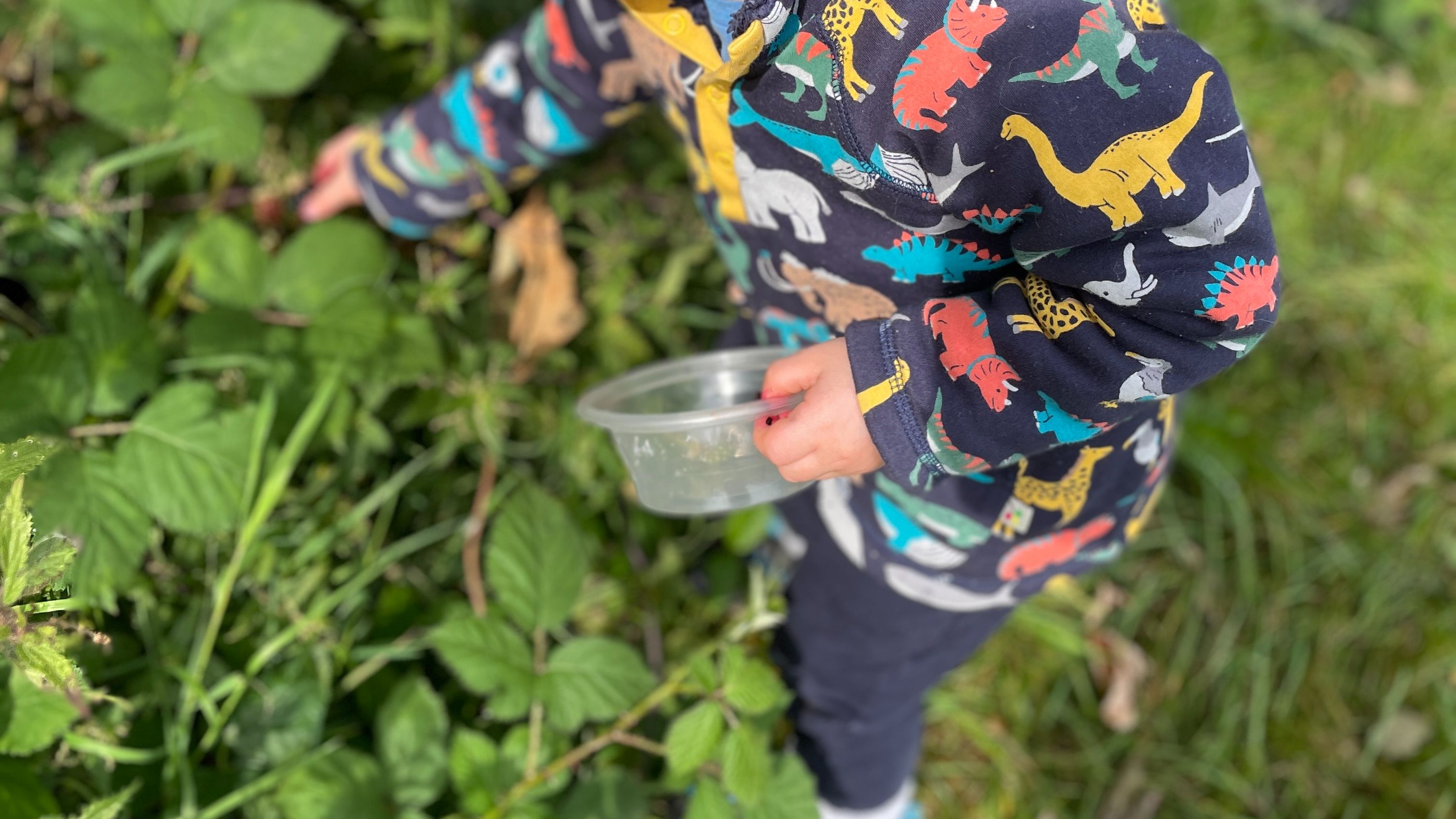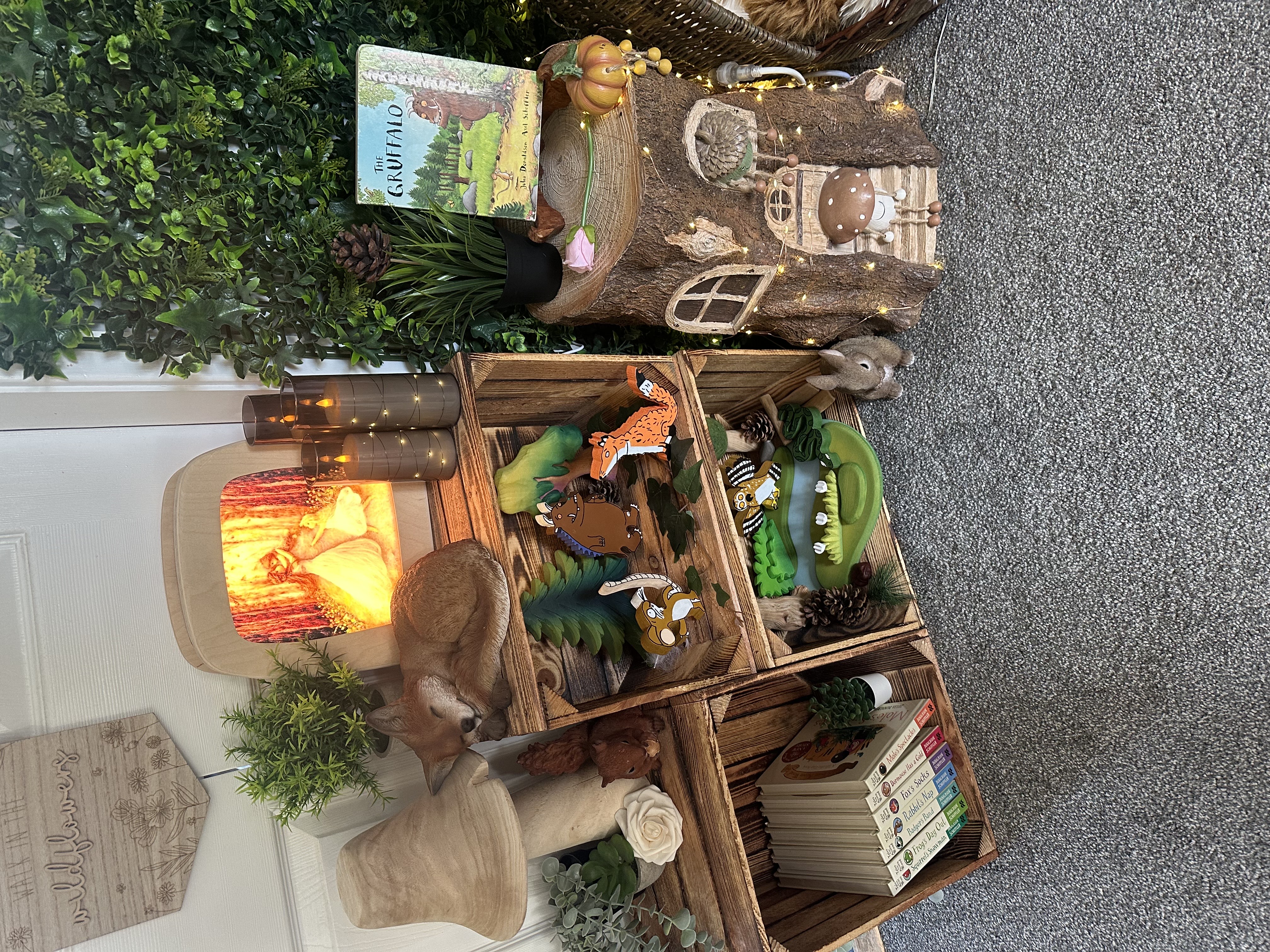Blog
“Strive to make everyday the best day of your life, because there is no good reason not to.” Hal Elrod
Struggling to feel excited for the day? Try this…

As early years educators, we pour so much of ourselves into our work. Some days feel full of energy and inspiration; others feel heavy or simply exhausting. Here’s a gentle truth: when we feel excited for the day—even about one small thing—that energy flows to the children. Our mood is contagious.
I love dropping my little wildling at nursery and hearing, “We’re going blackberry picking today!” or “Come and see what I’ve brought to learn more about aquariums!” That kind of attitude oozes excitement and tells a child their day will be full of wonder.
🌞 Start with you
 Before you step into the classroom, take a moment for yourself.
Before you step into the classroom, take a moment for yourself.
-
Enjoy a warm drink in peace, by a window or outdoors.
-
Write one intention for the day: “I’m going to notice children’s joy in play,” or “I’m taking my maths session outside today.”
-
Put on a favourite playlist or take a mindful walk.
When you start nourished, you arrive with presence.
🌿 In the classroom
 Choose one element of the environm...
Choose one element of the environm...
Creating a Calm and Hygge After-School Routine

The school day can feel full and busy — for both children and adults. By the time little ones tumble through the door, emotions are often bubbling under the surface: tiredness, excitement, overstimulation, or the simple need to be home.
This is where a calm, hygge-inspired after-school routine can make all the difference. Instead of rushing into the evening, we can create a soft landing — one that soothes, reconnects, and helps the whole family find their rhythm again. I like to try and plan for a calm pick up by parking the car a little way away from the pick up point so our walk to it gives us the chance to reconnect and be in nature. We sit in the boot of the car and share a snack together (orange, grapefruit, apple - something sensory that helps to reset the body). We then have a quiet ride home with some of my little ones favourite music or an audio story.
🌙 Step 1: The Arrival Ritual
Think of this as the bridge between “school world” and “home world.” Small, sensory cues ...
Slowing Down This Autumn: Rewilding Your Wanderlust
The beginning of the new school year shouldn’t have to feel stressful. Too often, September arrives with a rush of planning, preparation, and pressure—but what if we reimagined these early weeks? What if, instead of rushing, we filled our days with connection, calm, and time together?
One of the simplest ways to bring this shift is by stepping outdoors. Nature has an incredible way of grounding us—slowing our pace, calming our minds, and opening our eyes to the magic in the everyday. And the best part? Learning in nature doesn’t demand endless resources or preparation. The forest floor, the hedgerow, and even the schoolyard are already brimming with invitations to play. Less equipment means less tidying up, leaving more time for what really matters—being present with the children.
A Slow Approach to Pedagogy
Slowing down doesn’t mean doing less—it means doing with more intention. A slow pedagogy invites us to follow children’s interests, to notice what captures their hearts and mind...
Slow Pedagogy: Allotment Play in the Early Years

The Benefits of Allotment Play in the Early Years 🌱
Imagine a space where children can dig in the soil, water seeds, pull up carrots, and taste sun-warmed strawberries they’ve grown themselves. Allotments offer just that—a living, breathing classroom full of opportunities for play, discovery, and connection.
In the early years, play in an allotment setting is about so much more than gardening. It nurtures the whole child—physically, emotionally, socially, and cognitively—while fostering a deep relationship with nature and the rhythms of the seasons. We love visiting our friends allotment and noticing the seasonal changes. It's such a beautiful space to slow down and be present in the moment without the distraction of toys, noise and too much.
🌿 Physical and Cognitive Growth
Allotment play provides rich opportunities for developing both fine and gross motor skills. Digging, carrying watering cans, planting seeds, and pulling up vegetables all strengthen muscles and coordination...

✨ Why You Won’t See Many Chairs in a Hygge-Inspired Early Years Space
Walk into a typical early years classroom and you might see rows of chairs tucked under tables, ready for the day’s activities.
But step into a Hygge-inspired space and you’ll notice something different… there aren’t many chairs at all.
And that’s no accident.
🌿 Freedom to Move, Freedom to Learn
In a Hygge setting, children aren’t confined to one seat. Instead, they have the freedom to move, curl up, kneel, or sprawl out as they follow their curiosity. This flexibility isn’t just about comfort — it’s about supporting how children naturally learn and interact with the world.
Fewer traditional chairs means:
🌿 More room for open-ended play — spaces can shift and adapt to children’s needs.
💛 Cosy, home-like corners where children feel safe and settled.
🧠 Movement that supports focus and wellbeing — little bodies learn best when they can change position often.
🪑 What You’ll Find Instead
Rather than neat rows o...
Are you guilty of tidying up around the children?

In many early years settings — and even at home — tidying up is built into the daily rhythm. We think of it as part of keeping the environment safe, organised, and ready for the next activity.
But here’s something to pause and consider…
When we tidy up while a child is still deep in play, we may unintentionally be sending messages we never meant to give:
🚫 “Your play isn’t important.”
🚫 “This space needs to be adult-ready, not child-ready.”
🚫 “The story you’re building isn’t worth finishing.”

🌸 The Hygge-Inspired Approach
In a Hygge-inspired early years practice, we embrace a slower, more respectful pace.
We allow the block city to remain standing overnight so its builder can return to it in the morning.
We leave the small world exactly as it was so children can pick up their story where they left off.
We understand that tidy doesn’t always mean “ready for learning” — sometimes, a little creative chaos is exactly what children need to feel immersed and inspired.
✨ Why It Ma...
Blackberry Potion Making

🍇 Blackberry Potions in the Mud Kitchen 💜🌿
There’s something truly magical about autumn afternoons in the mud kitchen — the air is fresh, the ground is soft beneath little feet, and the blackberry brambles are heavy with jewel-like fruit.
Today, we’ve been brewing blackberry potions — a joyful blend of nature, imagination, and just the right amount of mess! ✨
This kind of play isn’t just fun — it’s a sensory-rich, child-led learning experience. Children are using fine motor skills to mash berries, developing language as they make up spells, and connecting deeply with the natural world as they notice colours, textures, and smells.

🍇 Blackberry Potion Recipe
Ingredients:
-
A handful of squishy blackberries (freshly picked or foraged — remember to forage safely)
-
2 cups of muddy water
-
A sprinkle of flower petals (lavender, daisies, or rose work beautifully)
-
A dash of grass clippings or moss
-
A spoonful of magic (eco glitter or coloured sand – optional)
-
F
...
More Than Ready: Why Early Skills Don’t Equal School Readiness

It can be so tempting to look at a child who’s already reading, counting confidently, or speaking in advanced sentences and think: “They’re ready for school.”
But here’s the truth: just because a child shows strong early skills on paper doesn’t mean they’re emotionally, socially, or physically ready for the demands of a formal classroom.
Because children are whole beings.

And true readiness isn’t just about phonics or maths—it’s about emotional regulation, secure attachments, confidence in movement, the ability to take turns, manage transitions, and navigate the social world. It’s about feeling safe, seen, and supported.
So let’s pause for a moment and remember…
1. ✅ Just because a child is “ready” academically doesn’t mean they’re ready developmentally.
Early literacy and numeracy are wonderful, but they’re just one part of the picture. A child might be able to decode a word—but still need support to express frustration without tears, to separate from a caregiver with confi...
Raising a Nature-Loving Child—One Simple Morning at a Time

It’s only 9 o’clock in the morning, and already we’ve woven so many simple, beautiful threads of nature into our day. Not through grand outings or picture-perfect setups—but through little moments. Moments that are easy to miss, but rich with connection.
I wanted to share them with you—not to impress or overwhelm—but to gently show how nature connection doesn’t have to be complicated to be meaningful. In fact, it’s often the small, repeated rhythms of the everyday that build a deep love for the outdoors in our children.

Here’s what our morning looked like…
🌞 We opened the curtains together, letting the morning light flood in. There was a pigeon on the roof next door, and we paused to wave hello. A tiny act, but one that reminds my child to respect and acknowledge all living things.
📚 We read Wild Woods in bed, snuggled under the covers. Nature books have a way of bringing the outside in and sparking curiosity—even before breakfast.
🍇 Our breakfast included blackberries we’d pick...
Calling for Change

“Your Training Is So Different to All the Rest…”
It’s something I hear often.
And honestly, I take it as the highest compliment.
Because I’m not here to deliver another generic course.
I’m here to lead a conversation about doing things differently.
Slow Pedagogy.
Honouring the child’s lead in their play.
Calm environments.
Gentle rhythms.
Rich, responsive interactions that grow from real connection.
These are the things that matter to me.
And maybe that’s because I’m passionate about leading change in the Early Years.
About stepping outside the box we’ve been told to stay inside for far too long.
Because truthfully—what have we got to lose?
The System Is Struggling
We’ve been battling the same problems for decades, and very little has truly changed.
In a sector under immense pressure:
-
Recruitment, retention, and recognition are all falling short.
-
5–6% of preschool children—that’s 1 in 18—already have a diagnosable mental health condition.
So many more are unseen...






